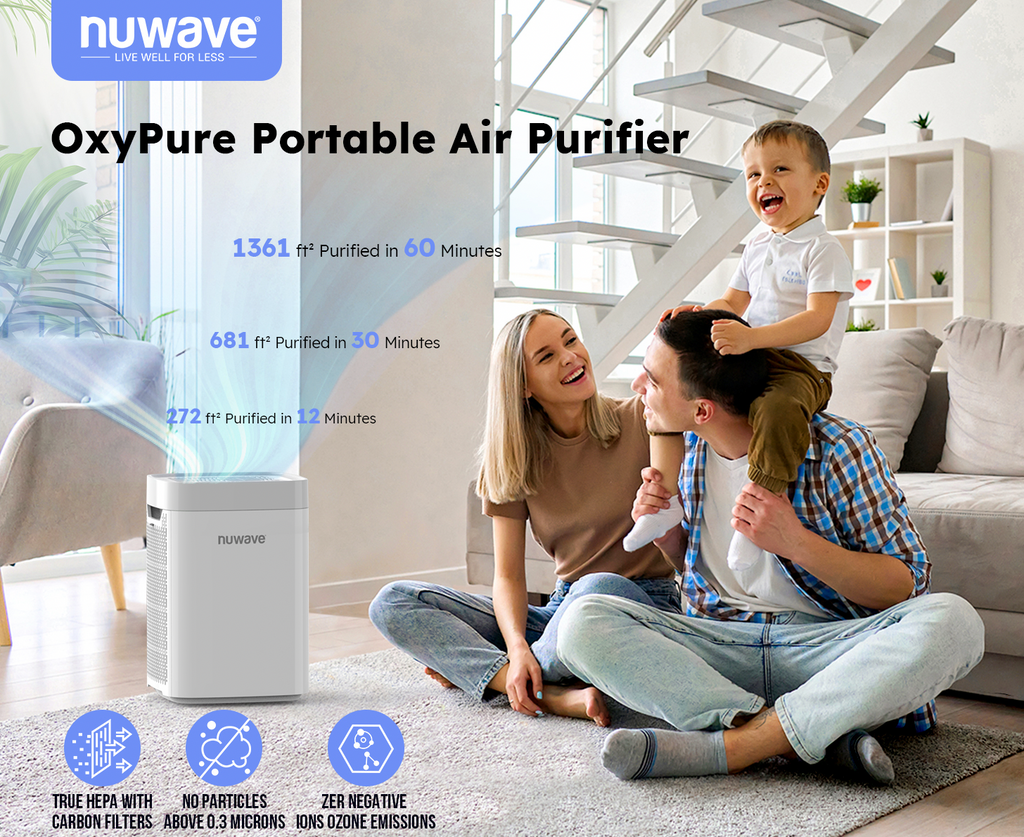Let's face it, our homes are supposed to be our sanctuaries, safe havens from the hustle and bustle of the outside world. But sometimes, that fresh air feeling can be elusive, especially if you suffer from allergies, wake up with a stuffy nose, or simply notice a buildup of dust bunnies multiplying faster than you can vacuum. This is where home air purifiers come in, promising to breathe new life – literally – into your indoor environment. But with so many options on the market and countless claims floating around, a crucial question lingers: do home air purifiers work?
The short answer is yes, air purifiers can be effective in improving your indoor air quality. Think of them as tiny ninjas silently battling the unseen enemies lurking in your home's atmosphere – dust mites, pet dander, pollen, and even smoke particles. However, like any good ninja, they have their strengths and weaknesses, and choosing the right one for your needs is key.
In this guide, we'll delve into the world of air purifiers, explore how they work, and equip you with the knowledge to make an informed decision. Consider this your roadmap to cleaner, fresher air, and hopefully, a good night's sleep free from sniffles!
Understanding the Enemy: Indoor Air Pollutants
Before we unleash the air purifier heroes, let's identify the villains they're up against. Our homes can harbor a surprising number of indoor air pollutants, some more obvious than others. Here are some of the common culprits:
- Dust and Allergens: Dust mites, those microscopic critters that love feasting on dead skin cells, are a major source of allergy woes. Pet dander, pollen sneaking in from open windows, and even mold spores can also trigger allergy and asthma symptoms.
- Smoke: Whether it's from cooking, wildfires (a growing concern in many areas), or even lingering cigarette smoke (if you recently bought a pre-owned home), smoke particles can irritate lungs and worsen respiratory problems.
- Volatile Organic Compounds (VOCs): These chemicals are emitted from various household products, including cleaning supplies, paints, and furniture. While often at low levels, VOCs can contribute to indoor air quality issues.
These pollutants can exacerbate existing respiratory problems, trigger allergies, and even contribute to headaches and fatigue. By improving indoor air quality, air purifiers can potentially alleviate these symptoms and create a healthier breathing environment for you and your family.
Do Home Air Purifiers Work: Basic Principle
Imagine your air purifier as a tiny air vacuum cleaner, but way more sophisticated. Here's the basic principle:
- Air Intake: The purifier draws in surrounding air through a fan or other mechanism.
-
Filtration: The air passes through one or more filters, depending on the type of purifier. These filters trap pollutants like dust, allergens, and smoke particles. Common filter types include:
- HEPA (High-Efficiency Particulate Air) filters: These are the workhorses, capturing at least 99.97% of airborne particles as small as 0.3 microns (think dust, pollen, and pet dander).
- Carbon filters: These are champions at absorbing gases and odors, including VOCs and cooking smells.
- Combination filters: Many air purifiers combine HEPA and carbon filters to tackle both particulate matter and gaseous pollutants.
- Clean Air Release: Finally, the purified air is released back into the room, hopefully leaving you breathing easier.
There are different types of air purifiers available, each with its strengths and weaknesses:
- HEPA air purifiers: These excel at capturing particles but may not be as effective with odors.
- Carbon air purifiers: Great for tackling odors and VOCs but may not be the best choice for allergies.
- Combination air purifiers: As the name suggests, these combine HEPA and carbon filtration for a broader range of pollutant removal.
My personal experience: I have a HEPA air purifier in my bedroom because I wake up with a stuffy nose sometimes, especially during allergy season. It's made a noticeable difference – I no longer wake up feeling congested!
Pro Tip: Consider the target pollutants you want to address when choosing your air purifier. If allergies are your main concern, a HEPA air purifier is a good choice. If you're looking to eliminate cooking odors, a carbon filter is key.
Do Home Air Purifiers Work: Testing Effectiveness
While manufacturer claims can be tempting, it's important to remember that independent testing is crucial to assess a purifier's true effectiveness. Look for air purifiers that have been tested by reputable organizations like the Association of Home Appliance Manufacturers (AHAM) or Underwriters Laboratories (UL). These organizations test air purifiers for their Clean Air Delivery Rate (CADR), which measures how effectively they remove smoke, dust, and pollen from a room.
CADR Explained: CADR is like a rating system for air purifiers. It provides a cubic feet per minute (CFM) number for each type of pollutant the purifier can remove. Here's a breakdown:
- Smoke CADR: This indicates how effectively the purifier removes smoke particles, including those from wildfires or cooking.
- Dust CADR: This measures the purifier's ability to capture dust mites, pet dander, and other allergens.
- Pollen CADR: This rating shows how well the purifier tackles pollen particles, a major concern for allergy sufferers during spring and fall.
Choosing the Right CADR: The recommended CADR for your air purifier depends on the size of the room you want to treat. Look for a purifier with a CADR rating that exceeds the square footage of your room. For example, if you have a bedroom that's 150 square feet, a purifier with a Smoke CADR of 180 would be sufficient.
My experience with CADR: When I bought my first air purifier, I got a little overwhelmed by all the numbers, especially when it came to understanding CADR (Clean Air Delivery Rate). Luckily, I discovered online resources and calculators that helped me determine the right CADR based on my room size and target pollutants. Recently, I stumbled upon the NuWave OxyPure air purifiers, and let me tell you, they're a total game changer. Enhanced with the most advanced technology, these purifiers can effectively tackle all indoor air concerns.
Pro Tip: Don't just focus on the highest CADR number. Consider the specific pollutants you want to address and choose a purifier with a strong CADR rating for those particular targets.
Making an Informed Decision: Choosing the Right Air Purifier
Now that you understand how air purifiers work and the importance of CADR, here are some key factors to consider when choosing the right one for your home:
- Room Size and CADR: As discussed earlier, match the CADR rating of the purifier to the size of the room you want to treat.
- Target Pollutants: Identify your primary concern – allergies, smoke, or VOCs – and choose a purifier with the appropriate filter type (HEPA, carbon, or combination).
- Noise Level: Air purifiers can generate noise, especially on higher fan settings. Consider noise level if you plan to use the purifier in a bedroom or living area.
- Energy Efficiency: Look for air purifiers with an Energy Star certification, indicating they operate efficiently and won't significantly increase your electricity bill.
- Filter Replacement Costs: Factor in the cost and frequency of filter replacements. HEPA filters typically need replacing every 6-12 months, while carbon filters may need changing more frequently depending on usage.
- Brand Reputation and Warranty: Choose a reputable brand that offers a solid warranty on the purifier itself and its filters.
Additional Considerations: Some air purifiers come with additional features like smart home integration, air quality sensors, and automatic settings. While these can be convenient, they may also increase the cost. Consider your needs and budget when deciding if these features are important to you.
Breathe Easy: The Final Verdict
So, do home air purifiers work? The answer is yes, but with a caveat – they can be very effective in improving indoor air quality, but choosing the right one for your specific needs is crucial. By understanding how air purifiers work, the importance of CADR, and the various factors to consider when selecting one, you're well on your way to a cleaner, healthier home environment.
Remember: Air purifiers are not a magic bullet. They work best in conjunction with other healthy home practices like regular cleaning, maintaining good ventilation, and controlling humidity levels.
Live Well, Breathe Easy: I hope this guide has empowered you to make an informed decision about air purifiers. If you have any questions or specific concerns about your indoor air quality, consult a healthcare professional for personalized advice. They can help you determine if an air purifier is right for you and recommend the best type for your needs.
Happy Breathing!


